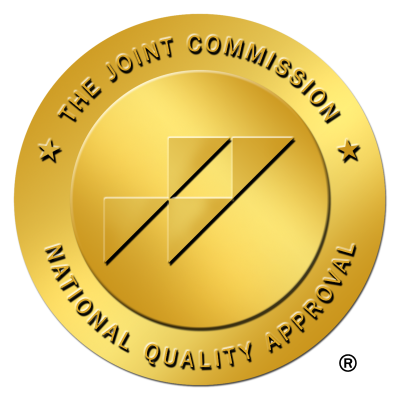Ohio PHP: Flexible Care, Local Community

Key Takeaways
- Ohio PHP programs provide intensive daily treatment while allowing patients to return home each evening, bridging the gap between inpatient and outpatient care
- Cost ranges from $350-$450 per day, with most insurance plans covering 80-100% of treatment expenses when medically necessary
- Program duration typically spans 2-6 weeks with 20-30 hours of weekly therapy, including individual counseling, group sessions, and medical monitoring
- Success rates show 65-75% completion rates when patients attend consistently and engage with aftercare planning
- Decision factors include medical stability, housing security, transportation access, and need for intensive support without 24-hour supervision
Understanding Ohio PHP for Recovery Success
Partial Hospitalization Programs (PHP) in Ohio represent a critical bridge in the continuum of substance use disorder treatment. These intensive outpatient programs provide structured, comprehensive care for individuals who need more support than traditional outpatient therapy but don't require 24-hour inpatient supervision.1
Ohio PHP programs serve approximately 15,000 individuals annually across the state's treatment network. These programs operate Monday through Friday, typically offering 4-6 hours of daily programming that includes individual therapy, group counseling, psychiatric services, and case management support.2
PHP Assessment Checklist
Use this tool to determine if PHP aligns with your recovery needs:
| Assessment Factor | PHP Suitable | Consider Alternatives |
|---|---|---|
| Medical Stability | Detox completed, stable vitals | Active withdrawal symptoms |
| Housing Situation | Safe, sober living environment | Unstable or triggering home |
| Transportation | Reliable daily transport | No consistent transportation |
| Support System | Some family/friend support | Complete social isolation |
| Previous Treatment | Outpatient unsuccessful | No prior treatment attempts |
Ohio PHP Program Structure and Components
Ohio's partial hospitalization programs follow evidence-based treatment models that address both substance use disorders and co-occurring mental health conditions. The structured approach ensures comprehensive care while maintaining flexibility for individuals to practice recovery skills in real-world settings.3
Daily Schedule Framework
Most Ohio PHP programs operate on a consistent schedule that provides predictability and structure:
- Morning Check-in (9:00-9:30 AM): Vital signs, medication review, daily goal setting
- Individual Therapy (9:30-10:30 AM): One-on-one counseling sessions with licensed therapists
- Group Therapy (10:45 AM-12:00 PM): Process groups, skills training, peer support
- Lunch Break (12:00-1:00 PM): Supervised meal time with nutritional education
- Specialized Programming (1:00-2:30 PM): Family therapy, trauma work, or vocational counseling
- Wrap-up Session (2:30-3:00 PM): Daily reflection, homework assignments, next-day planning
Treatment Modalities
Ohio PHP programs integrate multiple therapeutic approaches to address the complex nature of substance use disorders:
"The most effective PHP programs combine cognitive-behavioral therapy, motivational interviewing, and trauma-informed care to create individualized treatment plans that address each person's unique recovery needs."
— Dr. Sarah Martinez, Ohio Addiction Treatment Specialist
Core Treatment Components
- Cognitive Behavioral Therapy (CBT): Identifies and changes negative thought patterns
- Dialectical Behavior Therapy (DBT): Teaches emotional regulation and distress tolerance
- Motivational Interviewing: Enhances motivation for change through collaborative conversation
- Trauma-Informed Care: Addresses underlying trauma contributing to substance use
- Medication-Assisted Treatment (MAT): Combines medications with counseling for opioid use disorders
Cost Analysis and Insurance Coverage for Ohio PHP
Understanding the financial aspects of PHP treatment helps families make informed decisions about care options. Ohio PHP programs typically cost between $350-$450 per day, with total program costs ranging from $4,900-$12,600 depending on duration and services included.4
Insurance Coverage Breakdown
| Insurance Type | Typical Coverage | Patient Responsibility | Authorization Required |
|---|---|---|---|
| Private Insurance | 80-100% | $50-$200/day | Yes, pre-authorization |
| Medicaid | 100% | $0-$25/day | Yes, medical necessity |
| Medicare | 80% | 20% coinsurance | Yes, physician referral |
| Self-Pay | N/A | Full cost | No |
Financial Planning Tools
This approach works best when families have completed a thorough financial assessment before beginning treatment:
- Insurance Verification: Contact your insurance provider to confirm PHP benefits and pre-authorization requirements
- Out-of-Pocket Calculator: Multiply daily copay by estimated program length (14-42 days)
- Payment Plan Options: Many facilities offer 6-12 month payment plans with 0% interest
- Financial Assistance: Sliding scale fees available for households earning less than 200% of federal poverty level
Consider this method if your household income fluctuates or you're between insurance plans. Many Ohio PHP programs accept patients pending insurance approval and work with families to establish affordable payment arrangements.8
Choosing the Right Ohio PHP Program
Ohio hosts over 200 licensed PHP programs across urban and rural communities, each offering unique specializations and treatment approaches. The selection process requires careful evaluation of program credentials, treatment philosophy, and practical considerations like location and scheduling.9
Program Selection Decision Tree
This strategy suits individuals who need systematic guidance through the selection process:
- Assess Immediate Needs
- Medical complexity (dual diagnosis, chronic conditions)
- Geographic constraints (transportation, family proximity)
- Insurance network participation
- Evaluate Program Specializations
- Substance-specific programs (opioids, alcohol, stimulants)
- Population-specific services (adolescents, seniors, LGBTQ+)
- Co-occurring disorder expertise
- Review Quality Indicators
- Joint Commission accreditation
- Licensed clinical staff ratios
- Outcome data and completion rates
Red Flags to Avoid
Opt for this framework when evaluating potential programs to identify concerning practices:
- Guaranteed success claims - No legitimate program promises 100% success rates
- Pressure for immediate enrollment - Quality programs allow time for decision-making
- Lack of licensed staff - Verify therapist and medical staff credentials
- No family involvement - Effective programs include family education and support
- Unclear discharge planning - Programs should have structured aftercare coordination
Questions for Program Evaluation
This path makes sense for families who want comprehensive information before making treatment decisions:
Essential Questions to Ask
- What is your staff-to-patient ratio during group sessions?
- How do you handle medical emergencies or psychiatric crises?
- What percentage of patients complete the full program?
- How do you coordinate with primary care physicians and psychiatrists?
- What aftercare services do you provide or recommend?
- Can you provide references from former patients or families?
- How do you measure treatment outcomes and success?
Success Factors and Outcome Expectations
Research indicates that individuals who complete PHP programs show significant improvements in substance use patterns, mental health symptoms, and overall functioning. Ohio PHP programs report completion rates between 65-75%, with higher success rates among patients who actively engage in treatment planning and aftercare services.6
Measuring Progress and Success
This solution fits individuals who benefit from clear, measurable goals throughout their recovery journey:
| Success Metric | Week 1-2 | Week 3-4 | Week 5-6 | Post-Discharge |
|---|---|---|---|---|
| Attendance Rate | 85-90% | 90-95% | 95%+ | N/A |
| Coping Skills Use | Basic awareness | Daily practice | Independent application | Consistent use |
| Social Connections | Program peers | Expanding network | Community involvement | Sustained relationships |
| Relapse Prevention | Trigger identification | Plan development | Plan refinement | Plan execution |
Long-term Recovery Outcomes
Consider this route if you're seeking evidence-based expectations for PHP treatment effectiveness:
- 6-Month Sobriety Rates: 60-70% of PHP completers maintain abstinence
- Employment/Education: 75% return to work or school within 90 days
- Family Relationships: 80% report improved family functioning
- Mental Health: 65% show clinically significant improvement in depression/anxiety scores
- Healthcare Utilization: 50% reduction in emergency department visits
"The key to PHP success lies in the transition planning. Programs that invest heavily in discharge planning and aftercare coordination see the best long-term outcomes for their patients."
— Ohio Department of Mental Health and Addiction Services
You’re not alone in this.
When mental health challenges and addiction intersect, it can feel isolating. At Arista, we offer compassionate, evidence-based, and trauma-informed care to help you heal, grow, and move forward.
References
- Recovery.org — Partial Hospitalization Addiction Treatment Programs (PHP). https://recovery.org/drug-treatment/partial-hospitalization/
- GoodRx — What Is a Partial Hospitalization Program (PHP)?. https://www.goodrx.com/health-topic/mental-health/partial-hospitalization-program
- Rehabs.com — Partial Hospitalization Programs for Addiction Rehab. https://rehabs.com/treatment/outpatient/php/
- NCBI - Specialized Substance Abuse Treatment Programs. https://www.ncbi.nlm.nih.gov/books/NBK64815/
- DrugFree.org - Types of Addiction Treatment. https://drugfree.org/article/types-of-addiction-treatment/
- National Institute on Drug Abuse (NIDA) - Treatment and Recovery. https://nida.nih.gov/publications/drugs-brains-behavior-science-addiction/treatment-recovery
- SAMHSA - Substance Abuse and Mental Health Services Administration. https://www.samhsa.gov
- Medicare.gov - Mental Health & Substance Use Disorders Coverage. https://www.medicare.gov/coverage/mental-health-substance-use-disorder
- KFF - Substance Use and Mental Health Treatment Facilities Overview. https://www.kff.org/mental-health/a-look-at-substance-use-and-mental-health-treatment-facilities-across-the-u-s/
- Bureau of Prisons - Substance Abuse Treatment Program. https://www.bop.gov/inmates/custody_and_care/substance_abuse_treatment.jsp
Support that moves with you.
You’ve taken a brave first step. At Arista Recovery, we’re here to help you continue with best-in-class care designed for long-term healing and support.
.webp)






